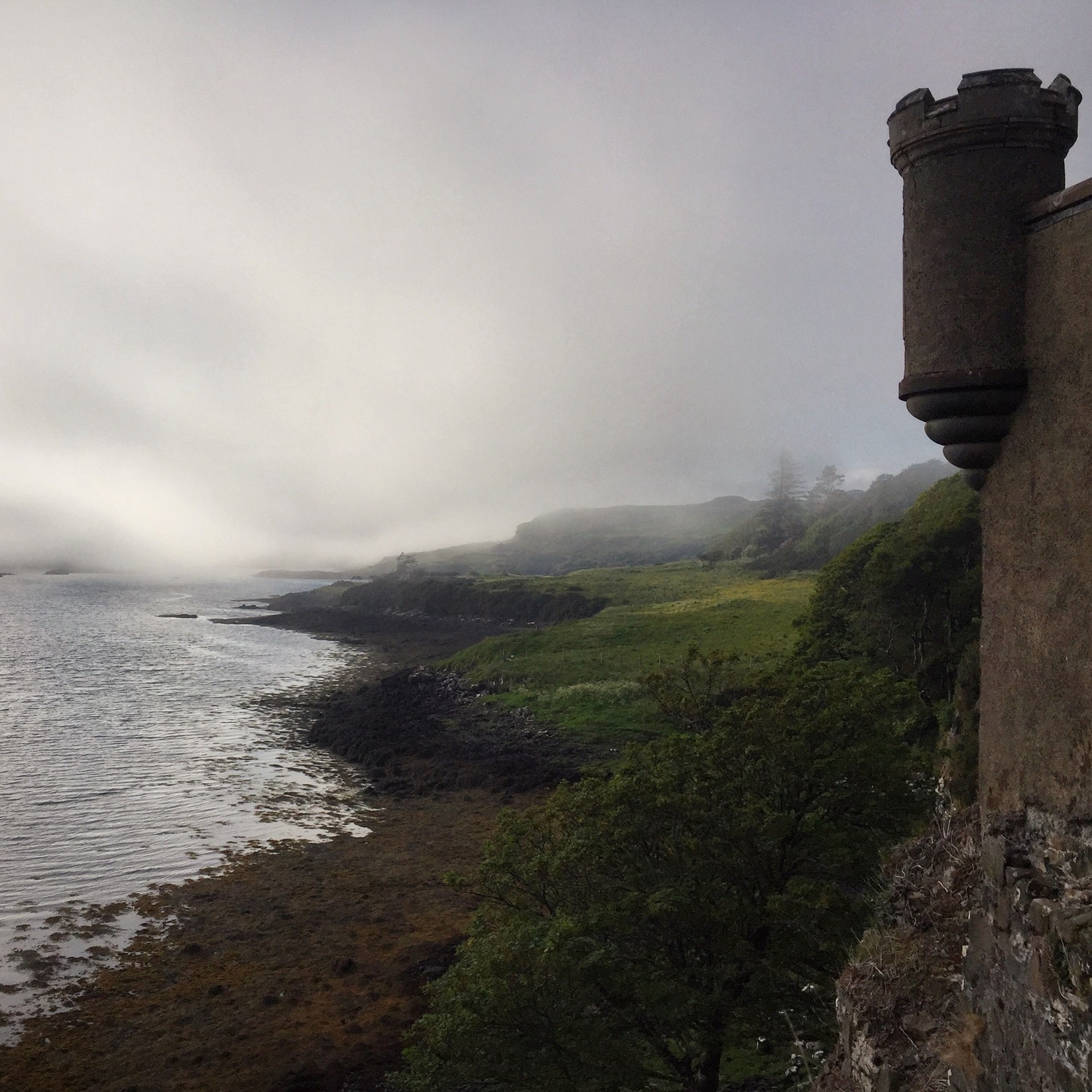The term haar, which traces back to Middle Dutch, describes the thick damp ‘hair’ of sea fog that rolls in from the North Sea along the coasts of Scotland and North East England. In his 2015 book Landmarks, nature writer Robert Macfarlane lists a dozen local-dialect terms for types of fog and mist around the British Isles. These include aggy-jaggers (mist forming along the north Kent coast), brim’skud (a Shetland word for haze rising like smoke from breaking waves), fret (sea mist or fog on the East and South coasts of England), and woor (a Manx term, from the Isle of Man, for low-hanging sea mist). ‘A basic literacy of landscape is falling away up and down the ages,’ writes Macfarlane. ‘And what is lost along with this literacy is something precious: a kind of word magic, the power that certain terms possess to enchant our relations with nature and place.’
Sea fog, or haar, at Loch Dunvegan, Isle of Skye, Inner Hebrides, Scotland spotted by Lucy Howard-Taylor, daughter of Virginia Howard (Member 48,437).



